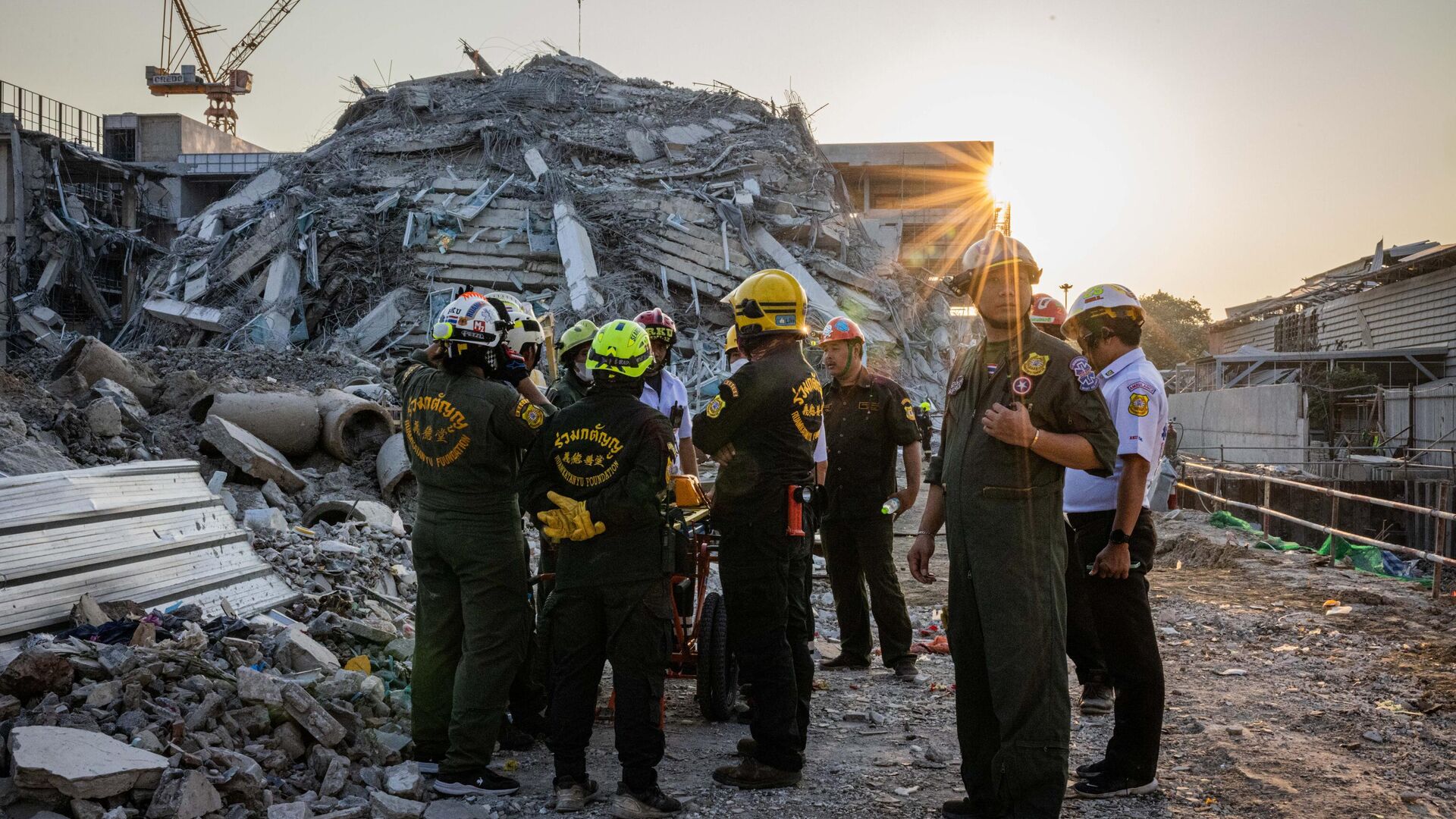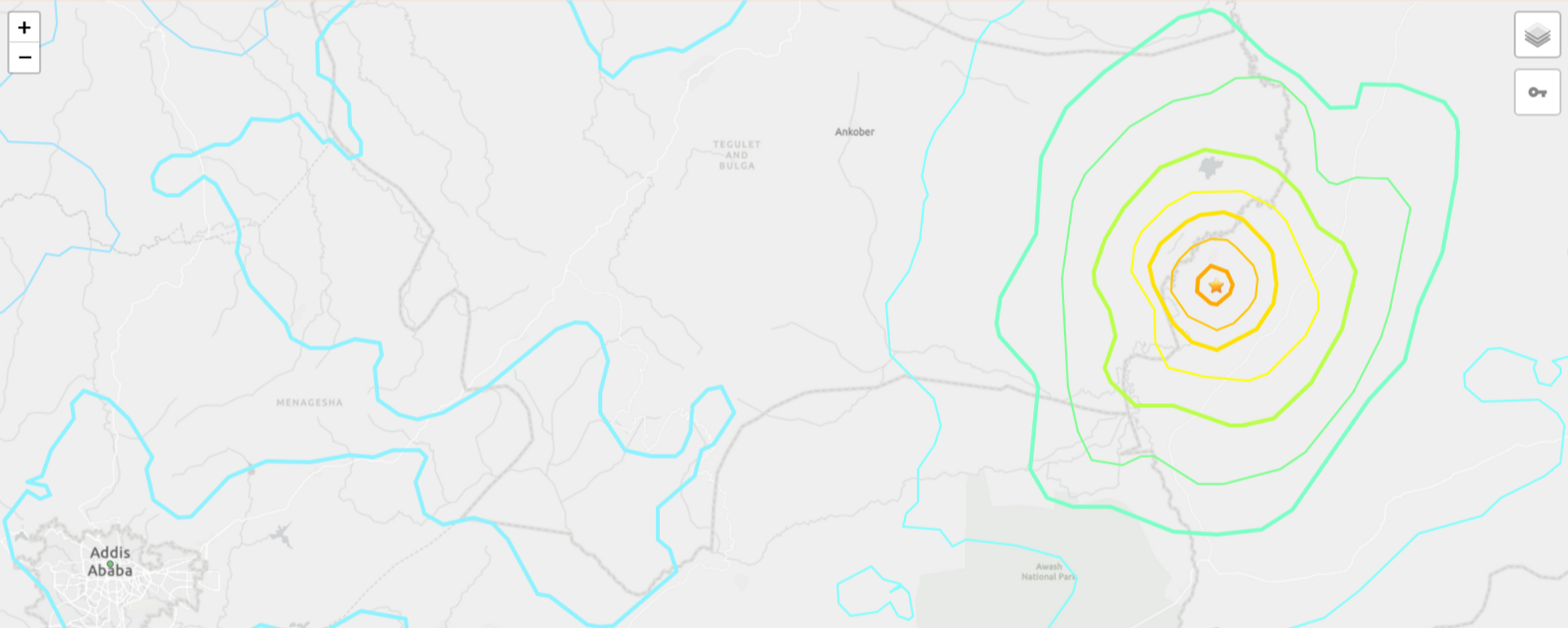https://en.sputniknews.africa/20250329/earthquake-in-southeast-asia-could-east-africa-face-similar-threat-1071338691.html
Earthquake in Southeast Asia: Could East Africa Face Similar Threat?
Earthquake in Southeast Asia: Could East Africa Face Similar Threat?
Sputnik Africa
On March 28, Myanmar experienced a devastating earthquake with a magnitude of 7.7. The following day, on March 29, a second earthquake occurred, measuring 5.1... 29.03.2025, Sputnik Africa
2025-03-29T18:11+0100
2025-03-29T18:11+0100
2025-03-31T12:06+0200
opinion
myanmar
east africa
southeast asia
sputnik africa
earth
earthquake
https://cdn1.img.sputniknews.africa/img/07e9/03/1d/1071338515_0:161:3070:1888_1920x0_80_0_0_f4a3da58b4f9f73651654f6be0d4d796.jpg
While earthquakes are common in northern and southern parts of the African Rift, a magnitude 7.7 earthquake like the recent event in Myanmar is unlikely, Director of the Institute of Earthquake Prediction Theory and Mathematical Geophysics of the Russian Academy of Sciences Petr Shebalin told Sputnik Africa. He added that there's no direct link between the Myanmar earthquake and increased seismic activity in East Africa; the only thing that they have in common is that they're both caused by tectonic shifts. Shebalin noted that precisely predicting future high-risk zones is currently impossible. The volcanic activity in the East African Rift leads to frequent, smaller earthquakes and prevents the build-up of stress necessary for a major event like the one in Myanmar, Atalay Ayele, Senior seismologist in Institute of Geophysics, Space Science and Astronomy at Addis Ababa University, said in an interview with Sputnik Africa. Concerning the reported increase in earthquake frequency in East Africa, particularly Ethiopia, the expert noted that the reported earthquake frequency is within a normal range for the active rift zone, characterized by fluctuating activity.
https://en.sputniknews.africa/20250317/two-earthquakes-with-magnitude-of-up-to-55-hit-ethiopia-in-last-24-hours-1071122576.html
myanmar
east africa
southeast asia
earth
Sputnik Africa
feedback@sputniknews.com
+74956456601
MIA „Rossiya Segodnya“
2025
News
en_EN
Sputnik Africa
feedback@sputniknews.com
+74956456601
MIA „Rossiya Segodnya“
Sputnik Africa
feedback@sputniknews.com
+74956456601
MIA „Rossiya Segodnya“
myanmar, east africa, southeast asia, sputnik africa, earth, earthquake
myanmar, east africa, southeast asia, sputnik africa, earth, earthquake
Earthquake in Southeast Asia: Could East Africa Face Similar Threat?
18:11 29.03.2025 (Updated: 12:06 31.03.2025) Ekaterina Shilova
Writer / Editor
On March 28, Myanmar experienced a devastating earthquake with a magnitude of 7.7. The following day, on March 29, a second earthquake occurred, measuring 5.1 in magnitude. The aftermath of the earthquakes left more than 1,600 people dead.
While earthquakes are common in northern and southern parts of the African Rift, a magnitude 7.7 earthquake like the recent event in Myanmar is unlikely, Director of the Institute of Earthquake Prediction Theory and Mathematical Geophysics of the Russian Academy of Sciences Petr Shebalin told Sputnik Africa.
He added that there's no direct link between the Myanmar earthquake and increased seismic activity in East
Africa; the only thing that they have in common is that they're both caused by tectonic shifts. Shebalin noted that precisely predicting future high-risk zones is currently impossible.
The volcanic activity in the East African Rift leads to frequent, smaller earthquakes and prevents the build-up of stress necessary for a major event like the one in Myanmar, Atalay Ayele, Senior seismologist in Institute of Geophysics, Space Science and Astronomy at Addis Ababa University, said in an interview with Sputnik Africa.
Concerning the reported increase in earthquake frequency in East Africa, particularly
Ethiopia, the expert noted that the reported earthquake frequency is within a normal range for the active rift zone, characterized by fluctuating activity.


